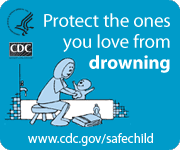What's the Deal With All of Those Signs Posted at the Swimming Pool
/My kids get a laugh from time to time when they notice the sign at the public swimming pool that states, "Persons having currently active diarrhea or who have had active diarrhea within the previous 14 days shall not be allowed to enter the pool water."
The thought comes to mind, should one have had this issue, how many people would actually remember if it was within the last 14 days. Heck, I can't even remember what I ate for breakfast yesterday and what I watched on TV last Sunday.
But the sign is well intended as waterborne disease is no laughing matter. Waterborne disease outbreaks in pools have often been caused by individuals with recent diarrhea; chlorine doesn't always take care of removing the viruses or parasites that can come from those with recent symptoms.
The requirement for this and other community pool signs comes from California Building Code Chapter 31B "Public Pools," Section 3120B "Required Signs."
Section 3120B.11 "Diarrhea" indicates the sign must have letters at least 1 inch high, clearly states what is noted above, and is posted at the entrance area of a public pool. Public pools include municipal/park district pools, hotel pools, water parks, swim schools, homeowner shared pools, apartment pools, campground pools, etc. One is thus not required to post this sign at your home pool (unless you really want to).
CDC ADVICE TO PREVENT INFECTIONS FROM PUBLIC SWIMMING POOLS
According to this source, the diarrhea sign and a variety of other pool signs were put into law in late 2012. Some examples of other public pool sign requirements include:
"No Diving" sign for pools with maximum depth of 6 feet or less
"No Lifeguard" sign when applicable
Emergency sign with 911 and nearest emergency services
"No use after dark" sign for pools without lighting
Artificial respiration and CPR sign
Pool user capacity sign (1 person per 10 sq ft in spa; 1 person per 20 sq ft in pool)
So you've learned something new. If you'd like to read the entire 28 pages of Chapter 31B of the California Building Code, or any of the Code for that matter, visit www.bsc.ca.gov/Codes.aspx.
DOZENS OF VENTURA COUNTY AREAS SWIMMING POOLS AND WATER PLAY PLACES







